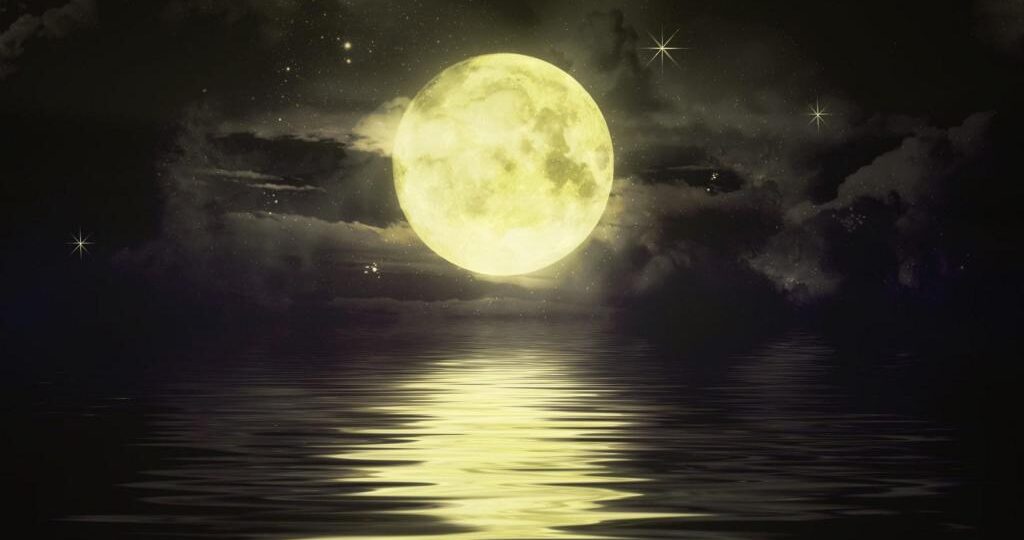The Mid-Autumn Festival, also known as the Moon Festival or Mooncake Festival,
is a traditional festival celebrated in Chinese culture.
It is one of the most important holidays in Chinese culture;
The history of the Mid-Autumn Festival dates back over 3,000 years.
The festival is held on the 15th day of the 8th month of the Chinese lunisolar calendar with a full moon at night,
corresponding to mid-September to early October of the Gregorian calendar.
On this day,the Chinese believe that the Moon is at its brightest and fullest size,
coinciding with harvest time in the middle of Autumn.
Lanterns of all size and shapes,are carried and displayed – symbolic beacons that light people’s path to prosperity and good fortune. Mooncakes,a rich pastry typically filled with sweet-bean,egg yolk, meat or lotus-seed paste,
are traditionally eaten during this festival.
The Mid-Autumn Festival is based on the legend of Chang’e, the Moon goddess in Chinese mythology.
Etymology
The Mid-Autumn Festival is so-named as it is held on the 15th of the 8th lunar month in the Chinese calendar around the autumn equinox.
Its name varies among Sinitic languages,with the most common one being simply “Mid-Autumn Festival”
as well as its traditional calendar date, either “Fifteenth of the Eighth Month”,which is more regional.
Other regional names include “Eighth Month Festival”
used in places such as the Northeast, Southern Fujian, and Jianghuai,
“Festival of Unity” used in Shanghai and Nanjing, as well as “Mooncake Festival” in Guangzhou.
However, ‘Mid-Autumn Festival’ is more widely used by locals when referring to the festival in English
and ‘Zhōngqiū Jié’ is used when referring to the festival in Chinese.
Meanings
The festival celebrates three fundamental concepts that are closely connected:
1.Gathering, such as family and friends coming together, or harvesting crops for the festival.
It is said the Moon is the brightest and roundest on this day which means family reunion.
Consequently, this is the main reason why the festival is thought to be important.
2.Thanksgiving, to give thanks for the harvest, or for harmonious unions
3.Praying (asking for conceptual or material satisfaction), such as for babies, a spouse, beauty, longevity, or for a good future
Traditions and myths surrounding the festival are formed around these concepts,
although traditions have changed over time due to changes in technology,science, economy,culture, and religion.
It’s about well being together.
Origins and development
The Chinese have celebrated the harvest during the autumn full moon since the Shang dynasty (c. 1600–1046 BCE).
The term mid-autumn first appeared in Rites of Zhou,a written collection of rituals of the Western Zhou dynasty (1046–771 BCE).
As for the royal court, it was dedicated to the goddess Taiyinxingjun.
This is still true for Taoism and Chinese folk religion.
The celebration as a festival only started to gain popularity during the early Tang dynasty (618–907 CE).
One legend explains that Emperor Xuanzong of Tang started to hold formal celebrations in his palace
after having explored the Moon-Palace.
In the Northern Song Dynasty,the Mid Autumn Festival has become a popular folk festival,
and officially designated the 15th day of the eighth month of the lunar calendar as the Mid Autumn Festival.
By the Ming and Qing Dynasties,the mid autumn festival had become one of the main folk festivals in China.
The Empress Dowager Cixi (late 19th century) enjoyed celebrating Mid-Autumn Festival
so much that she would spend the period between the thirteenth and seventeenth day of the eighth month staging elaborate rituals.
Moon worship
An important part of the festival celebration is Moon worship.
The ancient Chinese believed in rejuvenation being associated with the Moon and water,
and connected this concept to the menstruation of women, calling it “monthly water”.
The Zhuang people, for example, have an ancient fable saying the Sun and Moon are a couple and the stars are their children,
and when the Moon is pregnant, it becomes round, and then becomes crescent after giving birth to a child.
These beliefs made it popular among women to worship and give offerings to the Moon on this evening.
In some areas of China, there are still customs in which “men do not worship the moon
and the women do not offer sacrifices to the kitchen gods.”
In China, the Mid-Autumn festival symbolizes the family reunion and on this day,
all families will appreciate the Moon in the evening,
because it is the 15th day of the eighth month of the Chinese lunisolar calendar,
when the moon is at its fullest.
Legend
In the ancient past, there was a hero named Hou Yi who was excellent at archery. His wife was Chang’e.
One year, the ten suns rose in the sky together, causing great disaster to the people.
Yi shot down nine of the suns and left only one to provide light. An immortal admired Yi and sent him the elixir of immortality.
Yi did not want to leave Chang’e and be immortal without her, so he let Chang’e keep the elixir.
However, Peng Meng, one of his apprentices, knew this secret.
So, on the fifteenth of August in the Chinese lunisolar calendar,
when Yi went hunting, Peng Meng broke into Yi’s house and forced Chang’e to give the elixir to him.
Chang’e refused to do so. Instead, she swallowed it and flew into the sky.
Since she loved her husband and hoped to live nearby,she chose the moon for her residence.
When Yi came back and learned what had happened,
he felt so sad that he displayed the fruits and cakes Chang’e liked in the yard and gave sacrifices to his wife.
People soon learned about these activities,
and since they also were sympathetic to Chang’e they participated in these sacrifices with Yi.


